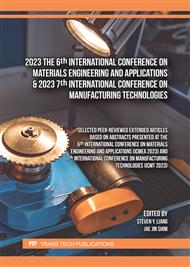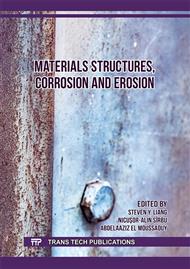p.3
p.9
p.15
p.21
p.27
p.33
p.43
p.55
Prediction of Axial Force on Dissimilar Aluminum Alloys Friction Stir Welding Using Design of Experiment
Abstract:
Friction stir welding (FSW) has become very popular for joining similar or dissimilar aluminum alloys. The heat used for this welding process is caused by friction between the welding tool and the workpiece which the axial force, the main parameter for heat generation, plays a very important role. Insufficient heat during welding will result in defective workpieces. This research is aimed to predict the axial force from the relevant factors of the FSW of dissimilar materials (aluminum alloys AA2024-T3 and AA6061-T6). The 23 full factorial design with center point was used for this experiment that consisted of 3 main factors: 1) rotation speed (rpm), 2) welding speed (mm/min), and 3) pin geometry each factor has 2 levels and 2 replications with the total of 20 experiments. The axial force data of each experiment were collected using a stationary dynamometer which obtained the data acquisition every 0.1 seconds (frequency of 10 Hz). The results from the design of experiment were analyzed by statistical method at the significance level of α = 0.05 which found that the significance and the optimum value of the main factors were rotation speed of 1500 rpm, welding speed of 35 mm/min, pin geometry of tri flat threaded, and the 2-way interaction between rotation speed and pin geometry. Furthermore, the prediction of the average axial force value on dissimilar aluminum alloys obtained from the specified parameters equals 478.91 N.
Info:
Periodical:
Pages:
9-14
Citation:
Online since:
September 2023
Authors:
Price:
Сopyright:
© 2023 Trans Tech Publications Ltd. All Rights Reserved
Share:
Citation:



